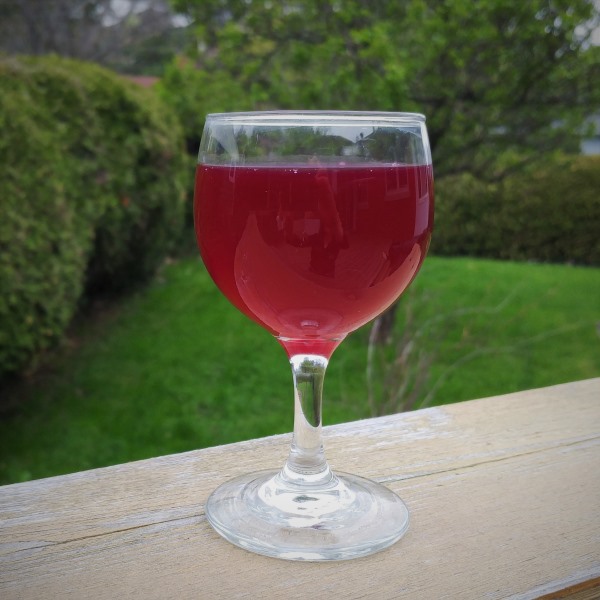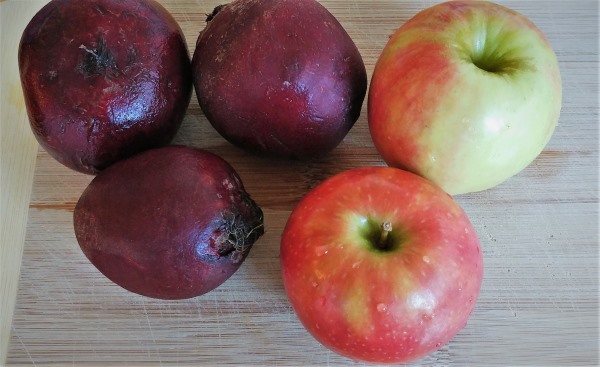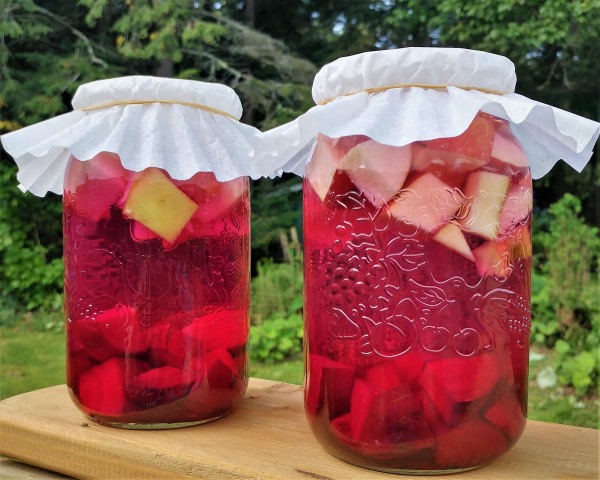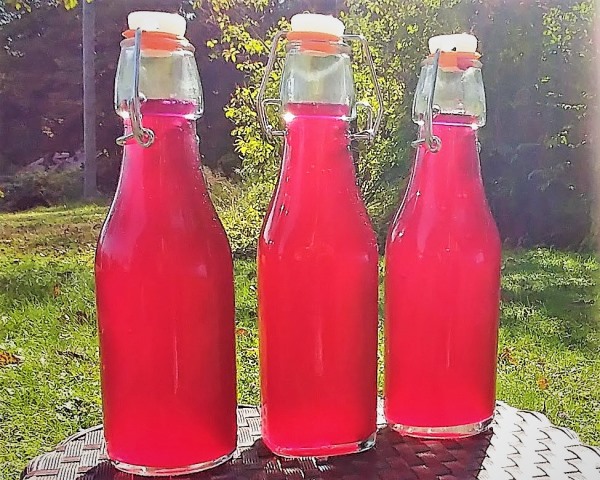Blog Categories
Recent Posts
- Home
- In Praise of Beet Kvass
In Praise of Beet Kvass
Posted by on

Looks like wine?
Well, it isn’t.
This is homemade beet kvass! A traditional fermented beverage as it has been made for centuries in Eastern Europe, and was mostly common among peasants.
A tad fizzy, gently tangy, with a hint of sweetness and a teeny trace of alcohol, we can think of it as an ancestor of lightly boozy soft drinks.
If this sounds somewhat like kombucha, you’re getting the gist.
There are many different types of kvasses, some are made from fruits and vegetables, others from stale sourdough bread.
This post is dedicated to my favorite - the beet and apple kvass which I’ve been making for a couple of months now. It’s so totally awesome, I thought I’d share it with the world.
An excellent thirst quencher, kvass is also considered a tonic for digestion and is rich in valuable nutrients. 2
One of the things I like most about it is that it’s a cinch to make. If you’re into fermentation-DIY, this is a great place to start.
Look! This is all you need!

I also like practicing an ancient tradition where people would make their own drinks using simple ingredients. For me, this is what real food is all about, the essence of mindful and sustainable eating.
In order to capture the spirit of how beet kvass used to be made throughout the centuries, let’s travel back a couple of hundred years to rural Russia. Imagine little villages surrounded by vast meadows and a few dirt roads connecting little farms. Now picture yourself plucking an apple from a tree in your yard and pulling out a couple beets from your field. Voilà! You have everything you need to make beet kvass.
Back to 2017.
You may wonder: if apples and beets are all there is to it, what creates the famous fermentation kvass is so well-known for?
The answer is surprisingly simple.
Everything you need to kick-start your fermentation is already inside your apple and beet. And, believe it or not, some of it is simply in the air! In the fermenting world we call it ‘wild fermentation’.
Beet kvass -as opposed to many other fermented beverages- does not require any external component to start it off. No powders, grains, mushrooms or fungi. It’s beautifully self-contained.
The beneficial bacteria responsible for the process are currently dormant inside your raw fruit and vegetable. All we need to do is provide them with ideal conditions to proliferate, and they will take care of the work.
Since they love ambient water as well as sweetness, a glass jar filled with room temperature water and a few slices of apple, are all that’s required to make them truly festive and happy.

From my experience we don’t even need to add any sugar, although it’s optional. The apple is quite a feast for them as it is.
Our secret ingredient is time. We need to let those friendly bacteria ferment in peace for a few days. How long exactly is hard to tell, and will largely depend on the weather. Overall, fermentation is faster when it’s warm and slower when it gets cold.
Over the next few days expect an exquisite fruity aroma, -courtesy of the apple-, as well as gentle bubbles to form at the top of your jar. These are signs that fermentation is well underway. Mother Nature is performing its magic in the micro ecosystem inside your jar, giving this beverage its delicate tang, and imbuing it with beneficial enzymes, friendly bacteria and live probiotics.
Once the kvass is ready to be bottled (in airtight conditions this time), you will need to handle your bottle with care. Those living bacteria may produce quite a bit of natural carbonation, and therefore build up pressure under the seal. ‘Burping’ the jar (gently!) might be in order. Truly a living food, the bottle may pop like a bottle of soda!

Fruity from the apple and earthy from the beets, this delectable kvass is a pleasure to drink. Fair chance your kvass will be slightly effervescent too.
Some say it may even resemble a delicate fruity wine, or an early form of light beer. I’ll let you decide for yourself.
The full recipe is in this wonderful book Traditionally Fermented Foods where you will also find recipes for other types of kvass and many more traditional homemade ferments.
Special thanks to author and fermentation expert Shannon Stonger, whose Beet & Apple Kvass recipe inspired this entire post and gave rise to a vast array of pink bubbling jars on our kitchen counter over the past few months.
The clear explanations and simple instructions in Traditionally Fermented Foods have demystified the fermentation process for me, and made it totally doable.
For all I know, getting a few apples and beets is dirt cheap, and the result is far superior to any store-bought soft drink I’ve had.
Following in the footsteps of our ancestors and practicing traditional artisanal techniques to nourish ourselves and our families is charmingly simple.

Wishing you a fabulous weekend, brimming with refreshing, bubbly kvass!
Yours in fermenting,
Didi
Wise Choice Market
Click here if you wish to read my full review of Traditionally Fermented Foods.
References:
- 1. Shannon Stonger: Traditionally Fermented Foods
- 2. Dr. Axe: Kvass: https://draxe.com/kvass/A Fermented Beverage with Many Probiotic and Cancer-Fighting Benefits
Disclaimer: This article represents its author’s opinion, and is not a medical, nutritional, or professional advice.


 Loading... Please wait...
Loading... Please wait...













